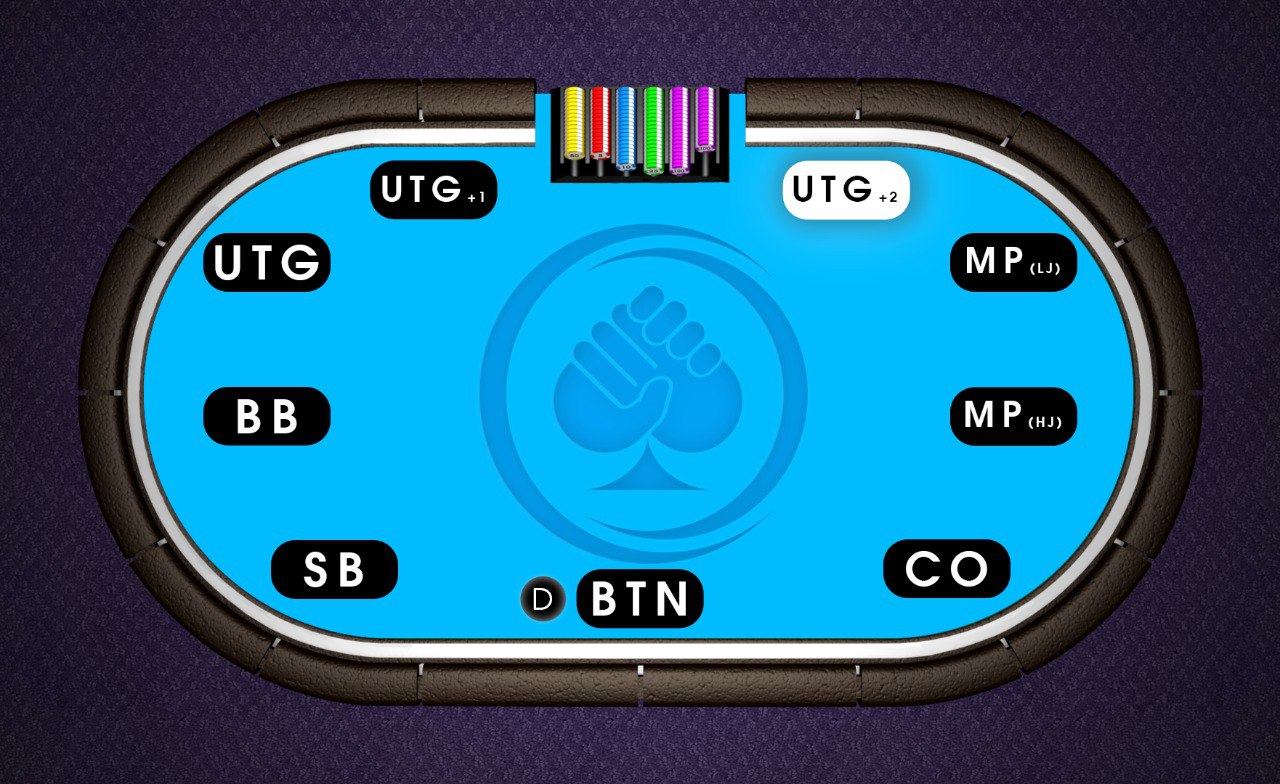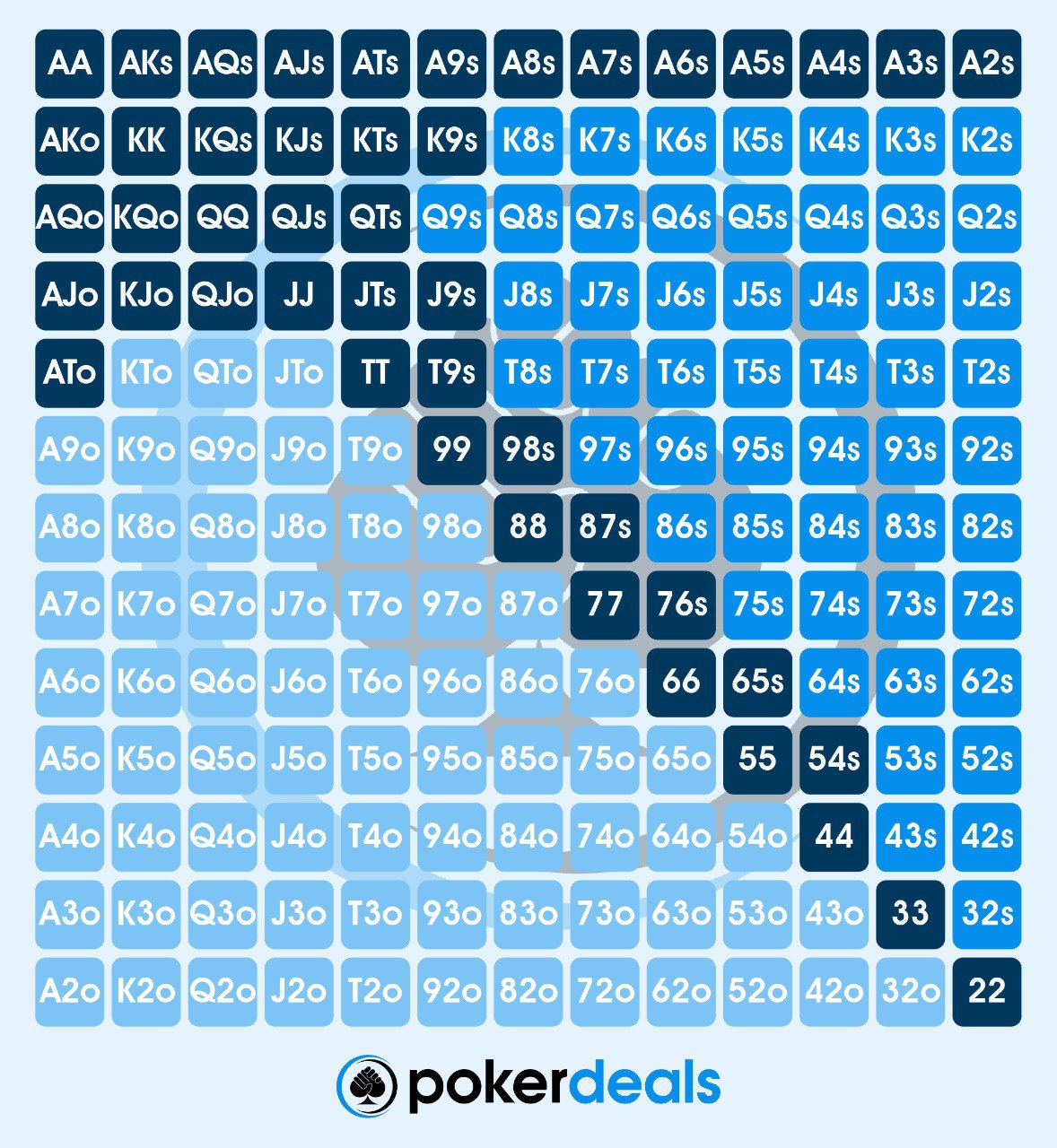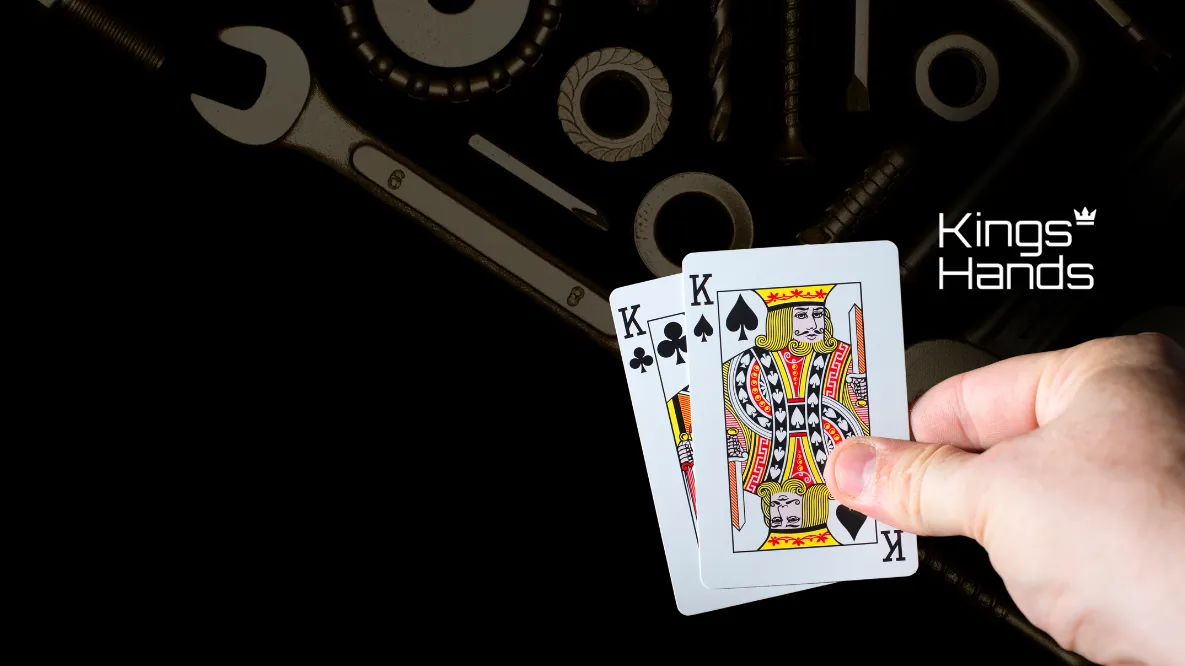It’s the last of the under the gun positions; soon we’ll be out of the firing line and be able to play a wider opening range, but for now, we need to keep things locked down. While there isn’t much variation between the under the gun positions, there are some differences that are worth noting, so don’t think you can skip over this one just because you’ve read the other two!
We’ll be taking you through how you should be playing from UTG+2, how to construct your UTG+2 opening range, and our recommendation for a UTG+2 opening range, so read on to find out more.
What is the Under The Gun+2 Position?
At a nine-handed table, the under the gun+2 position is the player two positions to the left of the under the gun position, or one position to the left of the UTG+1 position. They’re the third player to act preflop, after the UTG+1 position.

How Should You Play From Under The Gun+2?
Like the other under the gun positions, playing tight is the order of the day from UTG+2. We’re slowly moving around the table, so we can slightly widen our range, but we still need to be careful about opening too wide.
There are still six players left to act after us, so the odds of someone having a strong hand that can play back at us are still relatively high. Because of this, we need to open with a strong range ourselves, in order not to be exploited. If you raise too wide, your opponents can easily counter your strategy by playing a tight, solid range that dominates you postflop.
Many beginner players think that because they’re getting towards the middle of the table, they can open up their range. While this is true to a certain extent, we need to be playing closer to our under the gun range than to our button range to counteract the positional disadvantage that we will find ourselves in postflop.
How Do We Construct an Under The Gun+2 Opening Range?
But if we’re widening our range compared to UTG and UTG+1, what does that mean our UTG+2 opening range looks like?
As we mentioned in the previous article, we want to use our previous ranges as a baseline to build our ranges in later positions, so first, include all of the hands that you are opening from UTG+1. An important note for beginner players – there should be no hands that you raise in an early position that you don’t raise from a later position; e.g. if you raise the hand from UTG, you should be raising that hand from every position.
This means we want to include our strongest Ax hands, and because we’ve moved further around the table, we can include all of the suited Ax hands. We also want to raise our strongest broadway hands; the offsuit Tx broadways are still a little bit too weak to raise from these positions. All of the pocket pairs should be in your range from this position too.
We can also include a couple more suited connectors in our range, such as 54s and J9s, as these hands increase in value the closer we get to the button. We don’t want to go too mad raising these hands, so make sure you don’t add too many into your range, or your range will become too weak.
UTG+2 Base Opening Range
At a nine-handed cash game table with 100bb, we recommend that your baseline UTG+2 range should look something like this:
18.55% – 22+, A2s+, KTs+, QTs+, J9s+, T9s, 98s, 87s, 76s, 65s, ATo+, KJo+

Those of you who read our last article on the opening range for UTG+1, you’ll know that we’ve only added a few hands to our UTG+2 opening range. We’ve added the rest of the suited Ax hands, QJo, J9s, and 54s.
This is because both UTG+1 and UTG+2 are very similar positions to play, and therefore the ranges won’t vary much between the two. However, as we’re one position closer to the button, we can add a few more hands into the range, which is why we see the inclusion of the above hands.
That being said, we can’t add too many hands into our range due to our postflop disadvantage and the number of players that are left to act behind us, so we still need to play tight from these positions. Playing a tight, solid range from the earliest positions is key if you want to become a winning poker player, especially if you’re playing in a live cash game.
It’s tough to have the discipline to keep to these tight ranges when you’re card dead or running poorly, but adding more hands into your range isn’t going to solve the problem. You make your money in early position by having a strong range that will either dominate your opponent’s hands or will act as a deterrent when you decide to bluff. If you start to add too many hands to that range, neither strategy is effective, and you will end up losing money from these positions.
Adjusting Your Range
While we advise you to play a tight range from these positions, the range we posted above isn’t a hard and fast rule that you must stick to at all costs. Making small adjustments to suit your playing style or to adjust to a certain table dynamic is encouraged, as being able to adjust your play is one of the marks of a good poker player.
So, let’s take a look at how you should be adjusting your UTG+2 opening range when playing against a tight or loose table.
How You Should Adjust at a Tight Table?
If the table you’re playing on is particularly tight, the best way to exploit that is to widen your range to steal the blinds more often. However, you’re still playing from early position, so you can’t go mad when it comes to opening up your range.
Adding a few different hands and adding a few percentage points to your overall range is the best way to go, as this strikes a good balance between exploiting the tendencies of your table without overdoing it. If you start to go crazy and raise twice as many hands from UTG+2, your opponents will likely notice and not play as tight against your ranges.
We recommend that you raise hands that have the best potential for blocking your opponent’s continuing range, as these hands are more likely to get a fold than if you raise a hand like 32s. Hands like A9o, KTo, QTo, etc. all block cards that make up hands that your opponent is more likely to defend.
Add a few of these hands into your opening range if your table is on the tighter side, and enjoy raking in the blinds.
How You Should Adjust at a Loose Table?
Playing at a loose table from early position is an ideal situation in a lot of respects, as you’re already opening a tight, solid range, so you don’t need to make any big adjustments to punish your opponents. To play optimally, your opponents need to play tight against your opens from UTG+2 and earlier positions, but if they’re calling too often against your ranges, your profitability is increasing without having to make any changes.
Just make sure that you continue to play your tight range, even if things go badly. Sometimes, they’re going to get there with their garbage hand, and while it’s tempting to play a wider range to try and win that money back, you’ll win a lot more money if you stick to your tighter range. Let them make the mistakes, while you stick to what’s optimal.
Summary
The overarching theme of these first three positions can be summed up as “tight is right.” At a nine-handed table, you have a number of players to act behind you, and you’ll likely be out of position postflop, putting you at even more of a disadvantage. However, by playing a tight, solid range from these positions, you can mitigate these disadvantages, and make UTG+2 a profitable position.
Stay tuned for our next article on preflop opening ranges, where we’ll be covering the Lojack position, by following us on Facebook and Instagram.





















